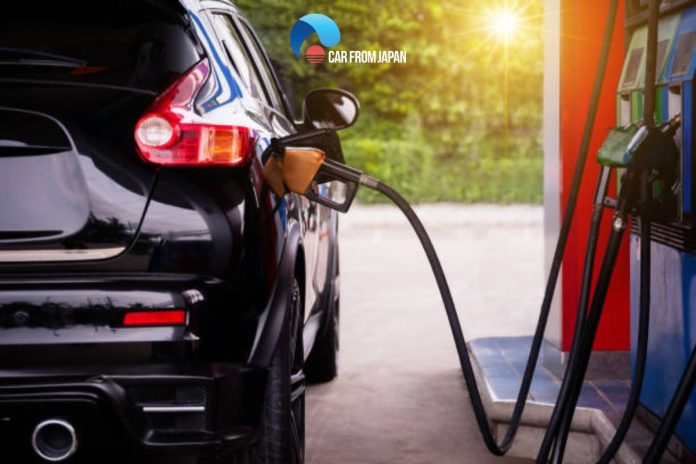Nowadays, everybody is talking about how to be more green and conserve resources in all aspects of life. One area where you can totally create a change is to save gas while driving, and it’s not at all difficult to do. You just need to adopt and practice good healthy driving habits, give your beloved vehicle proper maintenance so that it runs as efficiently as possible while not wasting fuel, or even go with certain upgrades. In this ultimate guide, you will learn how to save gas while driving using all three of these approaches.
Contents
- How To Save Gas: Practice Good Driving Habits
- How To Save Gas: Important Maintenance
- Proper tires inflation and maintenance
- Check wheel alignment
- Check for dragging brakes
- Maintain proper coolant level
- Change your oil and use synthetic oils
- Use a lower-viscosity oil in winter
- Change transmission fluid and differential oil
- Bad oxygen sensors
- Clean the air filters
- Bad fuel injectors
- Worn or fouled spark plugs
- How to Save Gas: Upgrades to Your Vehicles
- Final Thoughts
How To Save Gas: Practice Good Driving Habits
Plan your route
Firstly, try to drive less whenever you can by combining errands and choosing the arrangement with the shortest total route, while you can still accomplish as much as possible. This is especially true if you live far away from your workplace and shopping areas.
Planning ahead can also help you avoid rush hour and areas with high traffic or repeated traffic snarls and stop-and-go driving. This is important as a lot of stop-and-go driving will consume more gas and create more wear and tear on your car parts, for instance, the tires and the braking system. Meanwhile, driving at a steady speed on the highway is better for gas mileage as well as your vehicle’s lifespan.
Many folks underestimate this, but if you progressively make it a habit and do this every day and every time, the miles less traveled during a month or a year will add up very quickly. But think about it: this approach will not only save gas but also save you time and the stress of having to navigate in traffic on potentially congested streets.
Use the A/C and heater less often
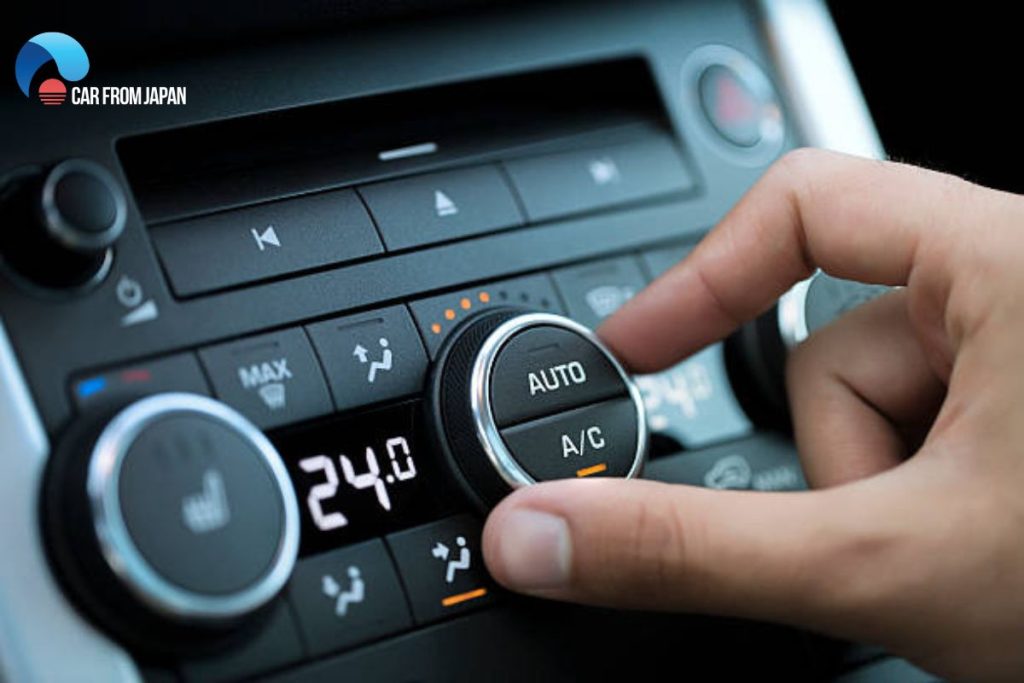
Excessive use of the A/C and heater is one of the most common causes for high fuel consumption, since they force the engine to work harder. To cut down on the A/C, after you start driving, open the windows for a few minutes or turn on the air vents to quickly cool down the car a bit, and only then turn the A/C on. This is especially helpful in the summer and will lighten the load on the A/C.
But remember to close the window before you hit the highway or increase your speed to 80 km/hr or more, as the open windows are liable to produce aerodynamic drag and thus will increase fuel consumption.
Another trick is to use air vents on days that are not too unbearable. This will circulate the air and replace the hot air inside your car with the cooler ambient air outside. One smart hack is parking in the shade, so that your car doesn’t heat up as much. To further cut down on using the A/C when you come back, simply leave the windows or sunroof cracked ever so slightly to allow for some air circulation while it’s parked.
Of course, only do this when you know it’s safe to do so, like if the car is parked in an area with good security and you’ll only be away for very short periods, or if you’re close enough to run out and shut the window when it starts to rain.
Lighten your load
Another often overlooked method to improve our fuel economy with no compromise is to lighten the load of your vehicle. Rummage through your cargo trunk or truck bed, and you might be surprised at all the unnecessary items that you bring along around town every day instead of just leaving them at home, such as extra heavy tools and supplies, or your kid’s toys. Again, this method is one that might sound trivial, but avid truckers and drivers do experience a noticeable effect on fuel consumption in the long term.
To further lighten your vehicle’s load, you can go more hardcore and replace the bulky parts with lighter components throughout the vehicle without compromising its integrity. Common areas for attention include removing the extra seats, switching glass windows with acrylic, changing the traditional brakes with disc brakes, swapping parts in the engine block, and removing unused parts in the trunk.
These will reduce your gas bill by making the car more aerodynamic and thus help the engine to use less power. But of course, to make sure what you do won’t affect your vehicle’s performance, you should consult a mechanic and take some time browsing blogs or video tutorials by car owners who have performed this type of swap to learn what’s possible and what’s recommended for your vehicle’s make and model.
Maximize your vehicle’s aerodynamics
While we’re on the topic of aerodynamics, note that if you own a compact passenger car, your aerodynamics should be good to start with. Just note that while many folks opt for roof racks to carry their stuff, this creates drag that will eat up more gas. Unless you actually need to haul something like a kayak or a few mountain bikes, keep your roof clear at all times.
If you own a truck, though, it will have inherently poorer aerodynamics compared to compact vehicles, partly due to its open beds and tailgate. These features result in airflow turbulence and, consequently, more aerodynamic drag, which mean fewer miles per gallon.
Contrary to popular belief among many truckers that simply lowering their tailgates will reduce drag, recent studies have shown that this increases turbulence and drag.
To improve your pickup’s aerodynamics in order to maximize gas mileage, you should invest in a tonneau cover. A cover not only eliminates a great deal of the airflow turbulence associated with a pickup, but it also protects your cargo and tools stored on the bed from the elements and cleans up your truck’s look.
If you’re hauling daily, a retractable bed cover would be ideal. Even better is one that comes with an organizer system to keep your things neatly categorized and separated for easier access.
Another solution for drag is Camper shells, which work similarly to tonneau covers. They also give you a large, secure cargo area. Although ancient Camper shells in the past used to look aesthetically unpleasant, earning them the “Grandpa’s fishing rig” stigma, Camper shells these days have flush-mounted glass, are contoured, and available in the most popular colors, or can be painted to match your truck.
Avoid excessive idling
Excessive idling eats up gas. One way to cut down on unnecessary idling is to avoid drive-thru windows with long lines. If you’re stopping at a red light and need to wait very long, or if you are picking someone up, don’t idle for ten minutes, but turn the vehicle off instead. Avoid idling whenever you can.
Steady driving
In addition to idling, certain daily driving habits hurt your gas mileage unnecessarily, such as braking drastically, continuous acceleration, and deceleration. Remember that it takes more gas to accelerate than it does to maintain the same speed.
Many folks like to indulge the urge-for-surge now and then, but nothing will suck up more gas than a heavy foot, so try to keep it to a minimum. Sure, it’s hard to avoid speeding up and slowing down continuously on any route, even for the most experienced drivers and truckers. One way to avoid this is to use your cruise control on the highway to help maintain a constant speed, which would mean more miles per gallon (MPG).
But do note that cruise control is most effective for gas-saving purposes on level roads. On uphill climbs, it can actually hurt fuel efficiency. One driving tips hack shared by the avid commercial truckers is to engage Overdrive on automatics while you’re on the freeway and upshift into the Overdrive gear on manuals, unless you’re towing or hauling.
Also, remember to keep a light foot on the pedals if you’re not in a hurry and not on the highway. Your vehicle consumes more fuel when you drive at higher speeds. Specifically, gas mileage decreases rapidly above 60 miles per hour.
Therefore, try to take it slow and easy on starts and stops, and try to slow down a little throughout the drive in general if you can. There is no need to drive too fast unless you’re on a highway or when it is safe and necessary to do so.
Put on the right gear
If your vehicle is a manual transmission model instead of automatic, especially if you’re an amateur driver, there is more room for unnecessary consumption of fuel. If you drive with a smaller gear while at a higher speed, the vehicle would have to put out more power to make a move, thus more fuel consumption.
For instance, if you have put on the second gear and are moving at 80km per hour, you’d be overusing gas. The key to saving gas while driving a manual transmission vehicle is to avoid acceleration and synchronize the speed with the gear changes.
How To Save Gas: Important Maintenance
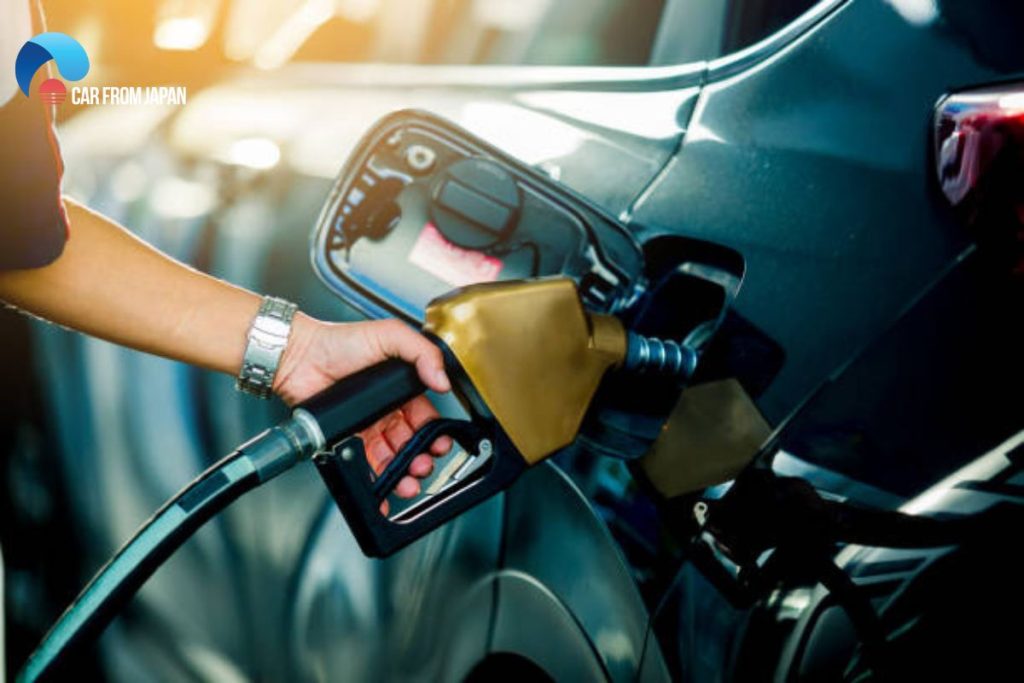
Proper tires inflation and maintenance
Properly monitoring your tires not only has a huge impact on your handling and tire wear but also on your fuel efficiency. Under-inflated tires will lay flatter on the road surface, which means increased friction and drag. Your vehicle will have to work harder to maintain speed, thus eating up more fuel as well as negatively affecting your ability to brake and control the vehicle.
Increased contact with the road also means under-inflated tires will wear faster and unevenly, but more importantly is the excessive heat buildup as you drive, which can result in tire failure and serious accidents.
Each vehicle make and model can have a different optimal tire pressure recommended by the manufacturer for the best handling and fuel economy, so consult your owner’s manual. Invest in a tire pressure gauge to accurately measure your tire pressure at least once a month, before starting on any long trip, and always check it before towing or hauling heavy loads.
Don’t just use your eyes to gauge whether your tire is in need of air. Use a tire pressure gauge, and for the most accurate pressure readings, check the tires when the vehicle has been parked for at least 3 hours, as driving heats the air inside the tires and effectively increases the pressure reading.
And remember that on extremely hot summer days, the tire pressure will increase, so you need to check the pressure more often to make sure the tires are not exceeding the maximum pressure level.
Check wheel alignment
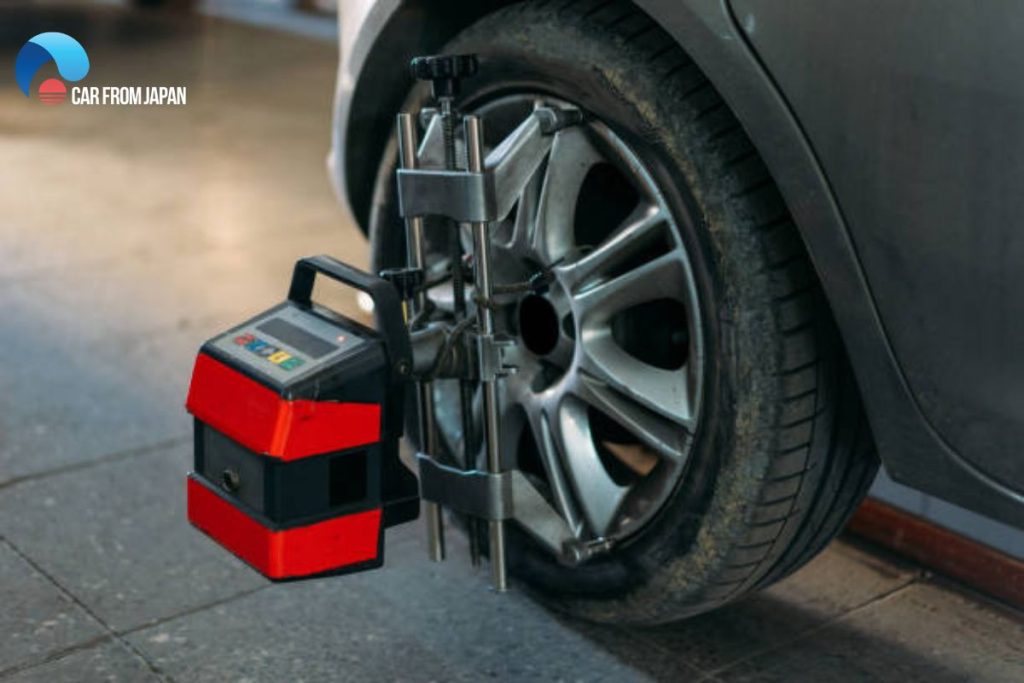
While we’re on tire inflation, don’t forget about wheel alignment. It’s intuitive that if an automobile isn’t rolling straight with all wheels at the same angle, you won’t get optimum fuel efficiency. Wheel alignment refers to all the elements that make your car go straight, namely the caster, camber, and toe. These elements are set to carefully calculated specifications.
And these specifications can be deformed in case you hit a massive pothole and bump your suspension out of alignment, in which case they will need to be realigned. You’ll need to take your car to an auto shop, where a mechanic will use standard measurements as targets for adjustment.
Check for dragging brakes
Many folks might be surprised to learn that brakes are important not just for slowing down and stopping, but also for your gas mileage. One way to save gas while driving is to properly maintain your brakes and periodically check for dragging brakes.
Brake problems, for instance, something is causing your brake to only partially apply or not fully release, can increase the rolling resistance of your vehicle. This would mean that the engine has to work harder to make up for this malfunction. And anything that makes your engine work harder will consume more fuel than needed.
If you find that the accelerator must be depressed farther than usual to achieve normal driving speeds, or upon regular maintenance, if you notice excessive gray dust on wheels and tires, then you’re dealing with dragging brakes or brakes that are not releasing fully. Inspect regularly and make sure that everything is properly lubricated to ensure safe driving and fuel efficiency.
Maintain proper coolant level
As with all machinery, overheating is catastrophic to overall efficiency. In the worst-case scenario, an overheated engine is far more likely to malfunction or suffer permanent damage, which demands an expensive and time-consuming replacement.
The engine relies on antifreeze, or engine coolant to maintain an optimal safe operating temperature. Thus, if you let your coolant reservoir run dry without refilling it in time, your engine might get overheated and will run less efficiently, eat up more gas, and might even fail completely.
So be sure to regularly check the coolant level and top it off as soon as possible. If you have electric cooling fans, inspect them too to make sure the cooling system is in good working condition.
Change your oil and use synthetic oils
Another big rule of thumb is anything that creates friction between mechanical parts in your vehicle’s engine will hurt engine performance, which directly affects gas mileage. This is why it is important to change your oil during scheduled servicing to ensure you lubricate your engine parts with a good motor oil.
You might have known that synthetic lubricant is the hot topic now. They create better lubrication between moving parts than conventional oils, so they not only help engines work more efficiently but also stay healthy for longer.
Plus, they don’t break down in high-heat, high-stress situations, which is why they are common in performance vehicles and in racing. They also offer excellent performance without thickening in extreme cold weather, as well as performance in extreme temperature fluctuations.
The best synthetic oils are even specifically engineered to be more robust in terms of high-temperature stability and low-temperature pumpability, as well as protection against deposits. For all these benefits, though, you’ll need to pay generally twice as much as a conventional oil of equivalent viscosity.
Use a lower-viscosity oil in winter
If you live somewhere that can get around or below freezing in the winter, you’ll have to change to a lighter oil before winter comes. This is because oil gets significantly thicker when temperature drops, making the oil pump work extra hard and directly hurting your mileage.
It’s recommended that in extremely cold climates, switch to a 0W30 or 0W40 oil to expedite oil flow in sub-freezing conditions. Switching from a thick 20W50 to a thinner 5W30 will make a noticeable difference in responsiveness. For most light truck use, 10W30 should be a good compromise, but consult your owner’s manual for factory recommendations. That said, always consult your manual and strictly follow your manufacturer’s recommendations.
If you live in a cold climate, you might want to switch to a lighter oil altogether to avoid forgetfulness, since thicker-viscosity oils are not necessary unless you’re frequently hauling or towing heavy loads.
Even if you can’t use lighter oil, regular oil changes will keep your oil from getting excessively thicker and contaminated with deposits over time. Check what your manufacturer recommends, but generally you should get an oil change about every 3,000 to 5,000 miles, plus before winter.
Change transmission fluid and differential oil
Proper engine maintenance is fairly common knowledge, but many areas are often overlooked, including the transmission fluid (gear oil) and differential oil. Changing these fluids regularly can significantly increase your gas mileage.
It’s recommended to change these fluids at least every 50,000 miles. Depending on the quality of the lubricants you go for and the tolerances of the mechanical systems from the factory, you might only need to change them a bit less often.
The rule of thumb is to change the rear differential oil together with the transmission fluid on manual transmissions at 30,000-mile intervals if your car is old, and generally more frequently under demanding conditions. If you own a newer car, the transmissions have lifetime service intervals, which is generally 100,000 miles.
Now, don’t get gear oil confused with engine oil. While the engine oil primarily lubricates engine parts, gear oil or transmission fluid serves multiple functions, including lubricating and protecting all moving components of the transmission and acting as a viscous coolant to transmit power from the engine to the transmission.
When the transmission fluid runs low, the transmission will run overly hot without the much-needed lubrication, thus affecting the system’s efficiency and fuel efficiency. Overheating also leads to excessive wear and tear, followed by malfunction and eventual failure.
Bad oxygen sensors
Remember Car Engine 101: your engine needs an optimal mixture of air and fuel of the correct ratio injected into the combustion chamber at precise moments for optimal efficiency. In other words, your engine has to “breathe” efficiently, and anything that messes with its “breathing” will hurt efficiency and the engine will eat up more gas than needed.
One possibility is bad oxygen. The oxygen sensors help maintain the proper mixture of air and fuel. If it no longer functions and throws the ratio of air and fuel off balance, it can reduce your gas mileage by up to 10%, which is a lot.
Clean the air filters
Another part that’s important for your engine’s ability to “breathe” properly is the air filter. Air filters trap dust and other contaminants in the air in a medium made of paper and synthetic fibers. Over time, this filter can be clogged with too much dirt and debris. This restricts airflow, thus the engine does not get the amount of air it requires for combustion and needs to work harder.
And anything that makes your engine work harder compromises fuel efficiency. According to professionals, a clogged air filter can increase your fuel consumption by as much as 10%.
Fortunately, this problem can be prevented with regular inspection and cleaning to unclog the air filters, so that the engine can “breathe” freely and operate at its peak performance.
Bad fuel injectors
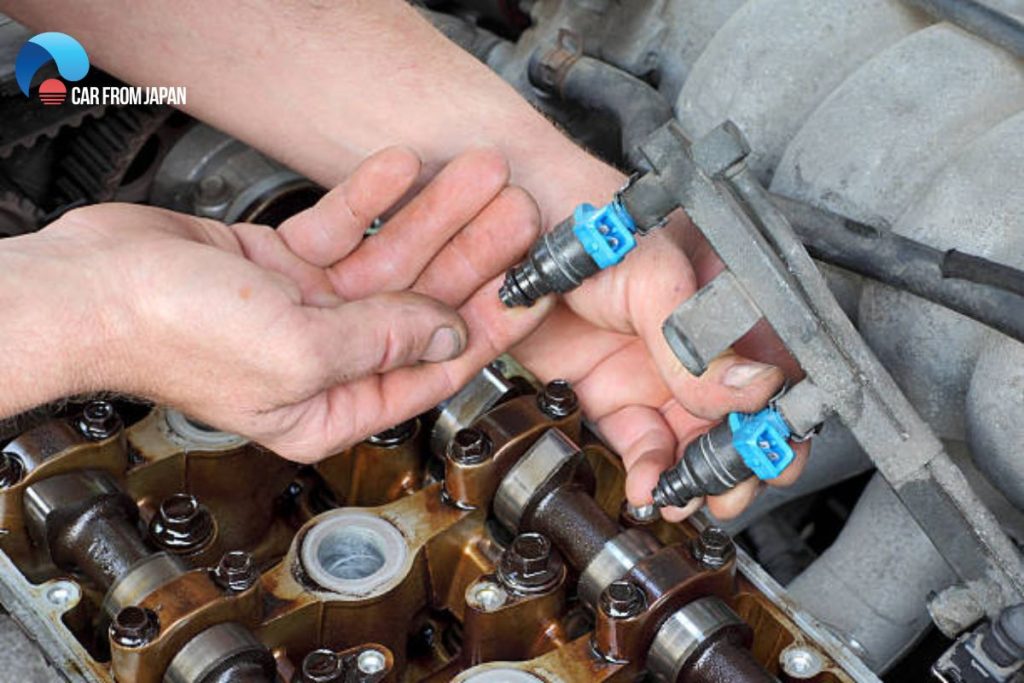
In addition to air, the engine needs to get the correct amount of fuel at the right time for optimal combustion and maximum fuel economy. As the name suggests, the fuel injectors are responsible for putting fuel into the engine. Having bad fuel injectors or a leak means the engine will not receive enough fuel required for optimal combustion, thus it will run less efficiently.
Worn or fouled spark plugs
The air and fuel mixture is ignited inside the combustion chamber with the help of the electrical spark from the spark plugs. Electricity is created by the alternator and transmitted through the spark plug, creating an arc of electricity that jumps across the gap of the two leads in the plug’s firing end.
Needless to say, ignition by the spark plugs needs to happen at precise moments. If the timing is off by just a little, or if a spark plug malfunctions in any other way, it will mess up the whole combustion process, hurting power output and gas mileage. Thus, inspect your spark plugs regularly and replace them if there’s any damage or wear to ensure optimal engine combustion.
How to Save Gas: Upgrades to Your Vehicles
Get a performance chips
A performance chip is an aftermarket software for your car’s computer that can make everything work harmoniously and at its maximum capacity for better performance. Aftermarket performance chips are by far the best bang for your buck when it comes to improving the power output and fuel efficiency in almost any factory turbo car. Many options are available, particularly for most later-model full-size pickups.
A chip is also called a “flash”, and installing a performance chip is also called “to reflash” the computer. These plug-in programmers allow you to adjust a variety of performance-related variables. By optimising these parameters, you can smooth out power delivery, improve overall engine efficiency as well as gas mileage, including spark plug timing, enhanced throttle response, injector pulse width, air intake index, and more.
However, you should consult a mechanic or an avid DIY car owner to make sure a certain chip is the right one for this gas-saving purpose. Do note that some chips are designed chiefly for unleashing the hidden power from the engine for maximum performance, which would demand more fuel. Also note that certain settings require you to use more premium fuel, due to the way performance chips are designed, which would often require premium gasoline to do its job.
Usually, car owners would get a performance chip together with a cold air intake and a free flow exhaust system to achieve the best fuel efficiency. Such an upgrade will cost you about $1,000.
Use a cold air intake (CAI)
Inside the combustion chamber, air gets mixed with fuel and is ignited to generate a combustion. If this air supply can be condensed, more air gets into the cylinder and this leads to more combustion. This means the engine will work more efficiently and produce more power output while using less fuel.
And one of the cheapest and easiest ways to make the air more condensed is to use a cold air intake, which is an aftermarket assembly of parts that help the pulled air to become cold and dense. It’s very effective in increasing gas mileage as well as torque and horsepower.
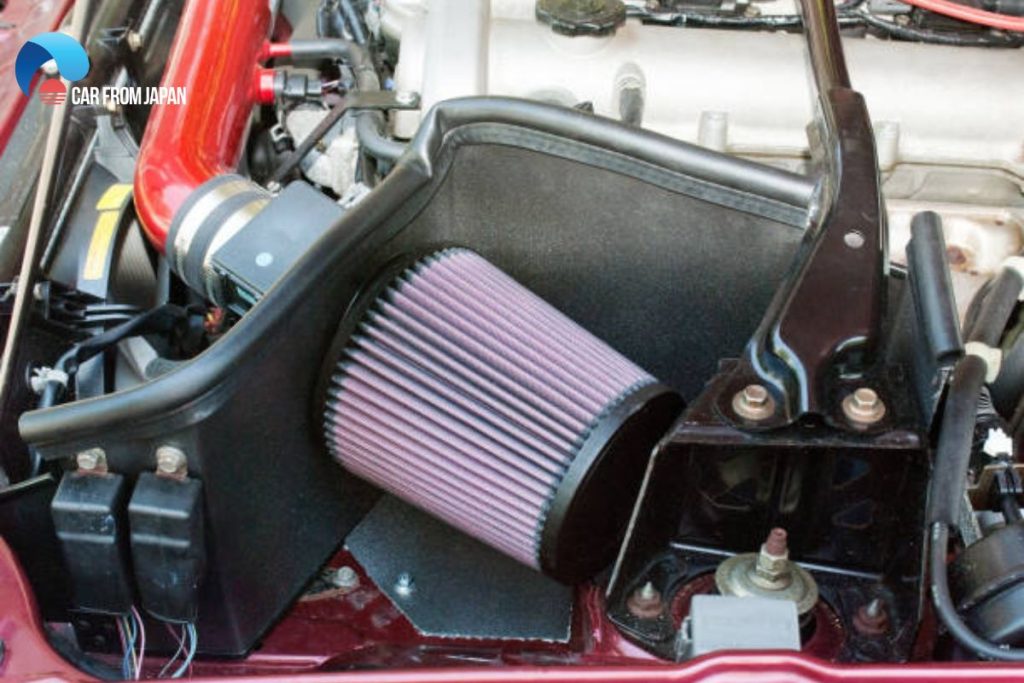
New kid on the block: fitch fuel catalyst ($190)
A new product for improved gas mileage has recently hit the market: the Fitch Fuel Catalyst. It is manufactured by Advanced Power Systems International, which is founded by John Fitch, a veteran race car champion. The fuel catalyst claims to treat the gasoline in the tank to keep it fresh for optimal combustion. Fresh gasoline free of contaminants also means less harmful tailpipe emissions.
The Fitch Fuel Catalyst is claimed not to clog any fuel pumps or any part of the fuel system, and for a reasonable initial investment of $190, it will last the life of your vehicle. The Fitch Catalyst is also available in an inline system for vehicles that won’t allow the use of pellets in the tank.
Many vehicle owners have tested the product by measuring their car’s combined highway and city average fuel consumption over extended periods of time and reported positive results. If these fuel catalysts last that long, their gas saving will pay off the product’s price in no time.
Final Thoughts
The biggest fuel-saving feature in your car isn’t the engine; it’s you. Every one of these tips comes down to being a smarter, smoother driver. By treating your gas pedal gently and planning, you can fight back against high gas prices and have a direct impact on how much you spend each week.

